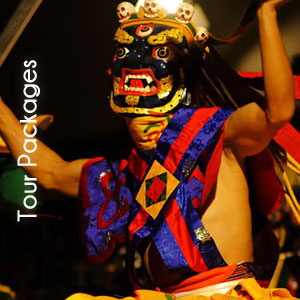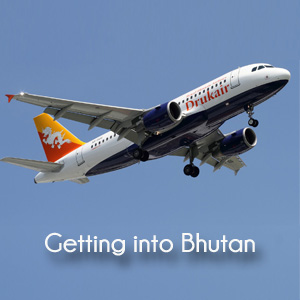The political system of Bhutan has evolved over time together with its tradition and culture. From a fragmented and a disoriented rule of the different regions by chieftains, local lords and a clan based rule, today we have a parliamentary democracy in place.
The first move towards a systematic scheme of governance came in 1616 with the arrival of Zhabdrung Nawnag Namgyal from Tibet. He introduced the dual system of governance with the Je Khenpo as the head of the spiritual and the Desids, as the head of the temporal.
But a major breakthrough came about in 1907 when the people unanimously enthroned Ugyen Wangchuck as the fist hereditary King of Bhutan. He was the man who had proved his mettle bringing together the different Dzongpons and Penlops (governors of fortress) and the much needed stability and peace in the country. Since then, the country was ruled by the successive monarchs of under the Wangchuck dynasty.
With the move to ensure a more democratic governance of the country, the Third King Jigme Dorji Wangchuck instituted the National Assembly (Tshogdu) in 1953. Every gewog had an elected member representing the National assembly. It became a platform where the people’s representatives enacted laws and discussed issues of national importance.
The establishment of the Royal Advisory Council (Lodoe Tshogde) in 1963 as a link between the king, council of ministers and the people was another move towards democratization. It also advised the king and the council of ministers on important issues and ensured that the projects were implemented successfully.
The institution of Dzongkhag Yargay Tshogdu (District Development Assembly) in 1981 and Gewog Yargay Tshogchung (County Development Assembly) in 1991 by the Fourth King Jigme Singye Wangchuck was another move towards decentralization.
But the devolution of the power of the King in 1998 to the cabinet ministers was the highest form of decentralization. The King, thereafter, began to serve as the Head of the State while the government was managed by the Prime Minister.
In November 2001, on the advice of the Fourth king, a committee chaired by the Chief Justice of Bhutan, was formed to draft the constitution of Bhutan. The constitution was launched in 2008 and the Fourth King of Bhutan, His Majesty Jigme Singye Wangchuck stepped down (where in the world does that happen?!) to give way to the Crown Prince, Jigme Khesar Namgyal Wangchuck and enthroned him the 5th dragon King. The constitution of the kingdom was adopted in 2008 and so the Parliamentary Democracy was introduced. People went to elections and chose their leader.
The transition from Hereditary Monarchy to that of the Parliamentary Democracy was a peaceful milestone, unlike in many other countries where it comes amidst chaos and strikes and violence.
Bhutan truly is a peaceful nation, that we guarantee.
The organs of the Bhutanese government comprise of the Legislature, Judiciary and the Executive. The ruling political party, the opposition and the National Council now forms the legislative body.

Bhutan Travel Info
Bhutan Travel tips, Daily Tourist Tariff, Bhutan Visa Information, Tour payment regarding your tour booking to Bhutan. Click on the link below to know more.
Learn more >>

Tour Packages
Travel to Bhutan with Sachock Bhutan Travels. We, at Sachock offers Cultural tours, Trekking Tours including the World's toughest Trek Snowmen Trek and colorful Festival tours of Bhutan.
Learn more >>

Getting into Bhutan
Travelling to Bhutan can be accessible by Air, to Paro(the only international airport in Bhutan connecting with Indian Cities, Nepal, Bangaldesh, Thailand & Singapore) & Road through Southern border towns of Phuentsholing, Gelephug and Samdrup Jongkhar.
Learn more >>

Sachock Bhutan Travels, P.O Box No: 1304, Karma Khangzang, Thimphu : Bhutan
Phone # (+975) 77177717 / 77210443 : Tele-Fax (+975) 2 333 881
Email: [email protected] / www.SachockBhutanTravels.com
Sachock Bhutan Travels, Copyright © 2025. All Rights Reserved.






